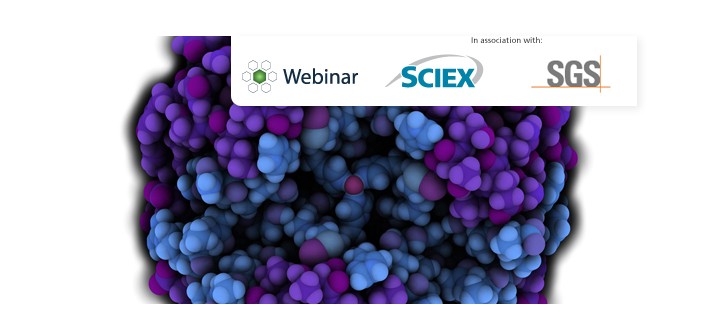Q&A follow up: Moving from small molecule to large molecule bioanalysis by LC–MS/MS: A case study on challenges and techniques

Bioanalysis Zone hosted a free online webinar, ‘Moving from small molecule to large molecule bioanalysis by LC–MS/MS: A case study on challenges and techniques,’ featuring speakers Romauld Sable (SGS) and Pegah Maghdooni Bagheri (SGS).
Following the webinar, our speakers took questions from the audience. Here, are the responses the those questions that we didn’t have time for during the live event. Do let us know your thoughts by commenting below this feature!
Did you miss this live webinar? View it on demand, here.
Can you explain on why do you call dwell time 20 msec as bad one against 5 msec?
With 20 msec, we obtained sensitivity lower than the limit we have fixed (1.10) to evaluate the most sensitive signature peptides.
Since Met residues are prone to oxidation (in vivo, ex vivo and in vitro), could you elaborate on why this peptide was chosen and if variability was observed due to Met oxidation?
You are correct and this still needs to be evaluated.
Was your calibration curved for the final assay spiked in 0.1% BSA or rat plasma?
The calibration curve was prepared by spiking a working solution (prepared in 0.1% BSA) in rat plasma.
How much SiLMab do you add to samples compared to your analyte of interest? Can you still get useful control information with a 1 ug or lower spike of SiLuMab?
1 ug/mL was the final concentration in the samples. There is enough sensitivity to go lower if required. You also have to be careful going too high because there is some amount of unlabelled protein present and the unlabelled peptides can interfere with the LLOQ.
What would be your approach to analysis when the humanized antibody will be dosed to humans, as your goat antiFc antibody approach will not work here?
Recombinant HER2 or an anti-ID anitbody would be required for immunocapture in a human matrix.
Which instrument platform you use for the analysis ?
QTRAP 6500.
In general, how do you validate a newly developed LC-MS/MS method?
Validation following the EMA or FDA guidelines : within-between series, matrix factor, extraction efficiency, reliability, short-term stability (benchtop, autosampler, in whole blood, after 3 freeze/thaw cycles).
Which capture reagent was used for your final assay?
Biotinylated Goat anti human IgG.
What is the RE% in the table in slide 37?
RE% obtained for evaluation of the matrix effect evaluated with 6 different batches of rat plasma.
How easy was it to obtain a quantity of trastuzamab for the validation ?
Trastuzumab was easily provided in PBS solution by reputable supplier as Carbosynth or Chemos.
What is the advantage of this method vs ELISA?
Specificity and greater linear dynamic range.
How do you evaluate digestion efficiency and IP extraction efficiency?
For IP efficiency, perform immunocapture on blank matrix then spike in analyte as control.
Can you name one or two most surprising challenges during this case study?
1) Selection of a signature peptide which is specific for the protein and allows researchers to reach good sensitivity.
2) Dealing with non specific binding (adsorption issue) during the sample prep.
How to set acceptance criteria for hibrid assay?
Even if we have included an immunocapture step during the process, the detection is still performed by MS-MS and therefore we suggest to keep the same acceptance criteria as used for LC/MS-MS (CV% and RE% : 20% at the LLOQ and 15% at the other levels).
Would we detect total or free drug in LC–MS LBA assay?
In a hybrid LC–MS assay you would expect to measure free drug due to the immunocapture of drug molecules without any soluble binding partners. However this might not always be the case and is dependent on the immunocapture strategy chosen. One could perform a total assay by protein precipitation or total sample digest to confirm.
How best sensitivity can be compared and acceptability of LBA LC–MS methods by regulatory bodies?
LBA methods are generally the more sensitive assay due to the amplification of analyte signal by the reporter system. But hybrid assays are the more selective. Can’t comment on acceptability by regulatory agencies.
Are there any new analytical techniques are being used to assess antibody drug conjugate purity and drug-antibody ratio and how do these differ from already existing analytical techniques? Which would be the most ideal technique for this process?
The best technique to study DAR is high-resolution mass spectrometry and do analysis on the intact ADC.
